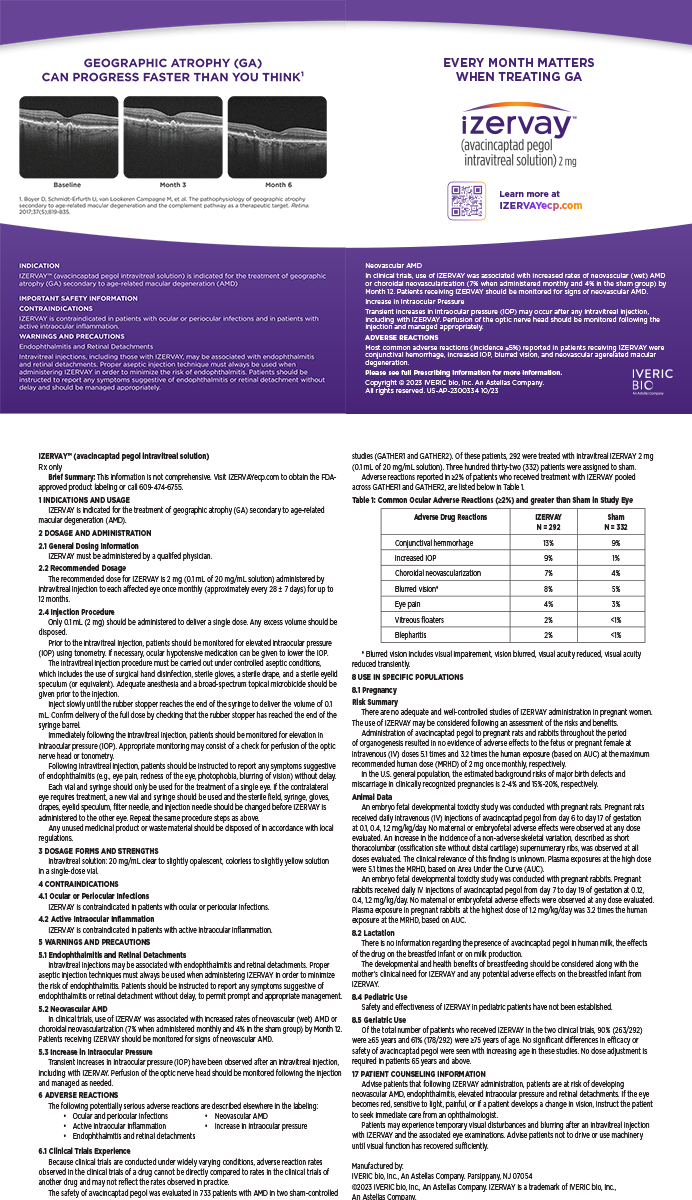It comes as no surprise to many surgeons that presbyopia-correcting IOLs have replaced LASIK and other available keratorefractive procedures as the next best financial hope for ophthalmology. By successfully adopting these lenses, many existing practices can realistically add six figures to their currant profits without expending additional capital or increasing their overhead costs. Most important, presbyopia-correcting IOLs optimize patients' likelihood of achieving successful visual outcomes and dramatically reducing their dependence on spectacles and contact lenses.
I do not believe that practitioners have hesitated to adopt presbyopia-correcting IOLs because they did not recognize the need for and the potential benefits of these lenses. Indeed, conquering presbyopia has been the ophthalmologic equivalent of finding the Holy Grail since Benjamin Franklin invented bifocal spectacles. I suspect that surgeons' slow acceptance of these premium IOLs is instead a classic example of the lack of adequate technology that was necessary to meet patients' needs for spectacle independence.
This article presents pearls for achieving success with presbyopia-correcting IOLs and describes the lessons I have learned from implanting these lenses.
IDENTIFY OPPORTUNITIES
If you look at your practice, you will recognize that internal marketing (ie, mining your existing patient base) provides a perfect opportunity for achieving success with presbyopia-correcting IOLs. First, most of your presbyopic patients are probably eager to reduce their dependence on reading glasses. Second, you need not purchase expensive new equipment (eg, excimer and femtosecond lasers) or acquire a new skill set to implant presbyopia-correcting IOLs. You will, however, need to adopt a new mindset and to educate your staff and patients about the differences between these lenses and monofocal IOLs.
Patients view the implantation of presbyopia-correcting IOLs as an elective procedure that usually involves a significant out-of-pocket expense. For this reason, their postoperative expectations differ from those of patients who undergo traditional cataract surgery. You must be prepared to temper patients' expectations in order to prevent them from becoming dissatisfied with the postoperative vision provided by presbyopia-correcting IOLs.
NEVER UNDERESTIMATE PATIENTS' DESIRES
Like many physicians, I initially blamed the low demand for presbyopia-correcting IOLs in my practice on a lack of suitable patients. In reality, these lenses are appropriate for almost every demographic (including Medicaid patients who may choose to pay the up-charge) except populations dominated by pediatric patients. That said, I recently implanted presbyopia-correcting IOLs in both eyes of a 16-year-old patient who developed dense, steroid-induced, posterior subcapsular cataracts. He was thrilled that these premium IOLs improved his distance vision from 20/200 to 20/25 without sacrificing his ability to read without corrective glasses.
One could argue that physicians who do not offer presbyopia-correcting IOLs to every presbyopic patient who qualifies for the lenses are violating the standard of care, especially since we know, and patients do not, that there is no second chance after primary cataract surgery or refractive lens exchange to receive this technology later (because the lens fibroses inside the capsular bag). Surgeons therefore must not presume or prejudge patients' desire to invest in these premium IOLs. Offering appropriate patients presbyopia-correcting IOLs preoperatively provides them with the best opportunity to reduce their dependence on spectacles.
Not every cataract patient, of course, is a suitable candidate for presbyopia-correcting lenses. Conditions that may contraindicate their implantation include notable visual or mental impairment (eg, dementia), retinal pathology (eg, disciform scarring secondary to age-related macular degeneration), disabilities of the central nervous system/optic nerve, and media opacities (eg, compromised corneal clarity).
ENLIST YOUR STAFF AS ADVOCATES
One of the most effective ways to introduce corrective procedures is to offer them to your staff members and their immediate family at cost. Happy staff members can be strong advocates for new procedures and, as such, may boost potential patients' confidence in the technology.
CONVERT EXPERIENCE INTO PRACTICE
Over the past 13 years, I have implanted approximately 2,000 presbyopia-correcting IOLs. Before each procedure, I spend extra chair time counseling patients about the benefits and limitations of these lenses. So far, I have learned the following lessons.
Successful outcomes require patience from you and your patients. Patients need time to (neuro)adapt to their new vision.
No matter how well a patient reads the eye chart or the near card after receiving presbyopia-correcting IOLs, you should not try to convince him to be happy if he is dissatisfied with the quality of his vision. Your responsibility is to listen carefully and allow the patient to express himself. Do not become defensive and immediately assume he is blaming you for his dissatisfaction. The technology is not perfect and will not produce the same result for every patient.
Occasionally, you may feel the desire to reimburse patients who are unhappy with their presbyopia-correcting IOLs. Even patients who signed a consent form that clearly describes the very problems they are experiencing may feel that their doctors misrepresented the technology. Some surgeons will argue that reimbursing a patient in this situation is essentially an admission of guilt or an acknowledgement of wrongdoing. I consider this strategy to be a form of compromise, and it has never resulted in a lawsuit in my practice. I have only reimbursed two patients. To this day, I am glad I did, and I keep this option open in my mind when I am dealing with dissatisfied patients.
Always be prepared to market yourself and promote your practice. Be proud of the services you offer and confident that no one provides better outcomes. Three years ago, I implanted bilateral presbyopia-correcting IOLs in Coach Herm Edwards' eyes just before he started his first season with the Kansas City Chiefs. Football rules in Kansas City, and a new coach has as much credibility as a new US president. Coach Edwards was very pleased with his new IOLs. Because he wanted other people to have a similarly positive experience, he volunteered to be a spokesperson for my practice. His efforts not only dramatically increased the demand for these premium IOLs and other services, but they also set a new bar for future pro-formas and benchmarks.
Believe in the technology you are promoting. I tell every patient who is contemplating a presbyopia-correcting IOL that I will choose the best technology available when it is time for me to undergo lenticular surgery.
Simple presbyopes who do not need spectacles to see at distance should never undergo refractive lens exchange with presbyopia-correcting IOLs. These patients are uniformly disappointed with their postoperative vision, because they feel that their distance vision is not as good as it was preoperatively. Although some of them will adapt to their lenses, most will be disappointed or angry after implantation, especially if they happily wore contact lenses for monovision preoperatively. These patients will occasionally demand that you exchange their bilateral presbyopia-correcting IOLs for monofocal lenses to achieve monovision.
Finally, be prepared to address refractive errors with LASIK, PRK, limbal relaxing incisions, piggyback IOLs, or a lens exchange—whether you perform these procedures yourself or have established a referral relationship with another surgeon. You are responsible for ensuring your patients' happiness, especially when safe solutions are at hand.
Steven M. Silverstein, MD, is the president of Silverstein Eye Centers in Kansas City, Missouri, and he is an assistant clinical professor of ophthalmology at the University of Missouri School of Medicine and the University Health Sciences, both in Kansas City. Dr. Silverstein may be reached at (816) 358-3600; ssilverstein@silversteineyecenters.com.


